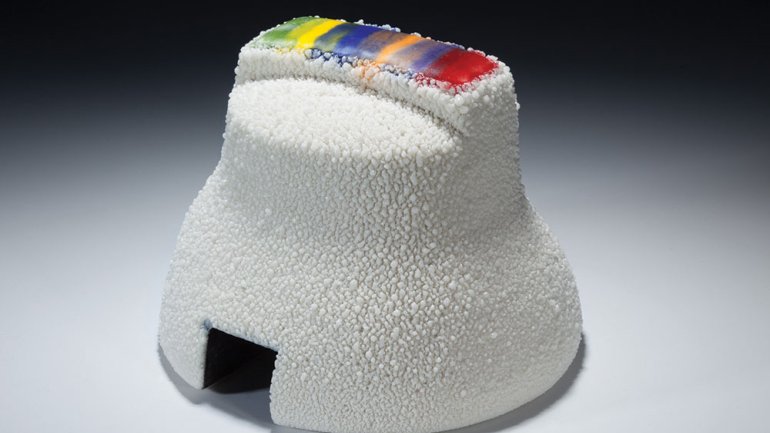The Perennial Question
The Perennial Question
Here’s one of those questions I get from casual readers of this magazine: What’s the difference between art and craft?
How do I answer? Well, I say, the lines are blurry, but craft has a legacy of functionality. And mastery of material tends to be more central to craft than it is to art. Finally, I offer, most craft is in three dimensions, while “art” is often in two.
That last quality, in particular, sets apart the work in this magazine. We don’t cover paintings and photography, generally speaking. Almost none of the work in these pages hangs flat on the wall. The work we show is dimensional. It wants to be seen, yes, but it begs to be touched. It calls out to the hand.
And that’s true for both viewer and maker. Take the ceramic work of emerging artist John Souter, for example. Part of its appeal is its visual form and use of color, sure. But to appreciate it is to want to run your hands over the matte surfaces made nubby by multiple firings, and the contrasting sleek, shiny spans.
And how does Souter work? By “pulling this color out and making it a tangible thing, shaping it and forming it,” he says. You can imagine his dexterous hands at work – touching, manipulating, handling.
The same is true of artist Nathalie Miebach. “What Miebach does in all her work,” writes contributing editor Joyce Lovelace, “is take scientific data and render it in tactile, three-dimensional form.” Part of what makes Miebach’s work so interesting is the riot of different textures unleashed by her materials: reeds, wood, bamboo, plastic, paper.
Yet what fascinates me is that not everyone finds such tactility appealing. In fact, throughout history, art works distinguished by their physicality have often been less valued.
Why? In part, we can thank (or blame) Aristotle, who viewed sight as the “noblest sense” – followed by hearing, smell, and taste, with humble touch at the bottom. His thinking permeates the cultural ideals of Western civilization – and our inherited ideas about art and craft.
David Howes, an anthropologist at Concordia University in Montreal, argues that the long-held primacy of sight over the other senses has made art more prestigious than craft. “The privileging of vision in turn informs the ranking of painting – given its association with the eye – as the ‘finest’ of the arts,” he says, “and basketry along with all the other so-called handicrafts, as belonging to the opposite, ‘manual’ (read: crude) end of the value spectrum.”
No wonder there’s an aura around conceptual art; it sounds so brainy, so untainted by the body and our animal heritage. No wonder there’s a stigma attached to manual labor.
Yet the question of what’s for the eye and what’s for the hand – what is art and what is craft – seems less relevant today. And maybe touch matters more than ever. Maybe our hands yearn for the textures of Souter and the wild dimensionality of Miebach because today they so often go unfulfilled. Consider how much time most of us spend with handheld electronic devices, with their slick, smooth, unreal surfaces. They may have “touch” screens, but they are without texture.
We need what we’ve traditionally called art. But we also need craft, with its multi-sensory aesthetic. We need to feel.
So, with apologies to Aristotle, far from seeing craft as less than art, I see it as more. Something to look at, yes – but so much more.
Monica Moses is editor in chief of American Craft.

